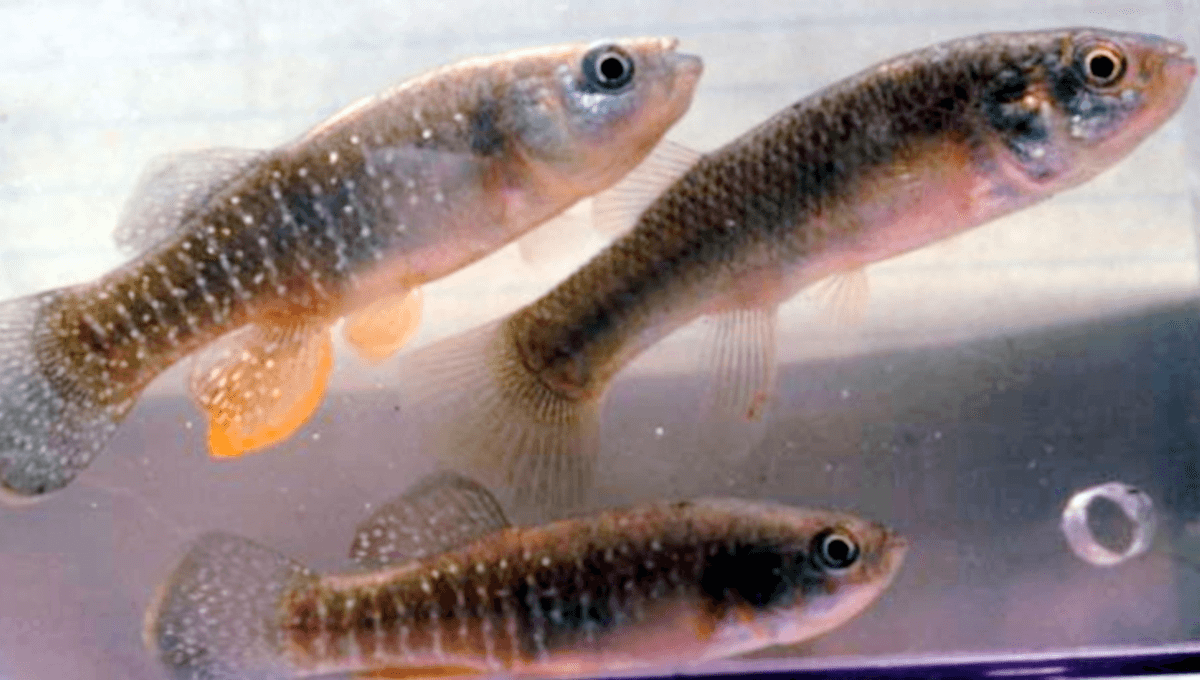
July 28, 1973 may not be a famous date for human history, but the same is not true for fish. This was the day two minnows blasted off into space on a quest to learn the cause of motion sickness, or more specifically: do fish get spacesick?
Spacesickness doesn’t feature much in fiction set in the distant future, perhaps because imaginary spacecraft so frequently come equipped with artificial gravity devices. However, it represents a nontrivial speedhump to humanity’s efforts to conquer the final frontier. Approximately half of astronauts get it on first encountering microgravity, despite the fact they are much less prone to conditions like seasickness than the general public.
To get to the root cause, NASA wondered how an animal that spends its life buoyant in water would be affected. Dolphins might have been the most revealing subjects, and the more lax ethical restrictions of the day would probably have allowed it, but the logistical obstacles were large.
Instead, NASA wanted a fish small enough for practical purposes, hardy enough to survive the rigors of the journey, and amiable enough no fingers would be endangered. They chose mummichogs, Fundulus heteroclitus, to bravely go where no fish had gone before.
Although not as popular for lab research as zebrafish, mummichogs are famous for being hard to kill, adapting to a wide range of temperatures, salinity, and even pollution. The fact that as natives of North America’s Atlantic coastline they could be scooped out of the waters off Cape Canaveral may have helped.
So important was the quest to understand space sickness considered that the fish were part of just the second crewed mission to Skylab, the orbiting research station built to maintain America’s presence in space after the Apollo missions.
Just two adults were taken on the mission, but they were accompanied by fifty eggs to create a generation born to float.
According to Scientific American, the mummichogs started out pitching forwards, causing them to swim in tight loops. As time went on they developed a new way of identifying “up” – that being by Skylab’s lights, the closest counterpart to the Sun in their eyes.
Fish-human communication being poor, the astronauts could not ask the mummichogs how their nausea levels were, and there is no record of them vomiting like their mammalian companions. Nevertheless, the interpretation researchers put on the observations is that looping was the fish’s response to the confusing message the balance centers of their inner ears were giving them. The behavior normalized along a similar timeline to that of the astronauts, starting from day 3.
On the other hand, when the eggs hatched in the third week in orbit, the mummichog fry swam normally, and adapted to microgravity as if they were …hatched to it? From the first, they kept their backs in the direction of the lights, translating light as up. When astronauts shook the aquarium, the young fish were briefly disorientated, adopting looping behavior like their elders, but quickly recovered.
Fish have been back in space since, and some of the studies have been considerably grimmer. In one research effort, unhelpful to those seeking to shake off the mad scientist stereotype, six goldfish were sent to the International Space Station (ISS). However, the change of scenery was not considered enough. One had its otoliths (earbones) removed prior to flight, while four had the otoliths on one side taken out, with the other side left normal. One had its otoliths left alone.
All looped initially. Five were still doing so, at least occasionally, by day 12. The fish initially rolled towards the operated-on side, but had recovered by day eight. The goldfish were returned to Earth, and apparently adapted well to the return of gravity.
A mutant strain of medaka (Japanese rice fish) avoided such surgery by having a mutation that delays, and in some cases prevents, otolith formation. Scientists were so keen to study their responses to microgravity that they were taken on flights that experienced temporary freefall (the so-called vomit comet) to observe their behavior. Now that competition for cargo to the ISS isn’t quite so tight, they’ve gone up long enough to learn they lose bone mineral density under space conditions, just like human astronauts. Someone put those fish on a treadmill.
Today, there are zebrafish on the Tiangong Space Station, but this time they’re not there primarily to test their balance. Instead, the station is exploring the creation of a functioning ecosystem in microgravity, with fish and algae in productive balance – probably an essential step before long space flights can occur.
Source Link: When NASA Sent Fish Into Orbit To Study Space Sickness